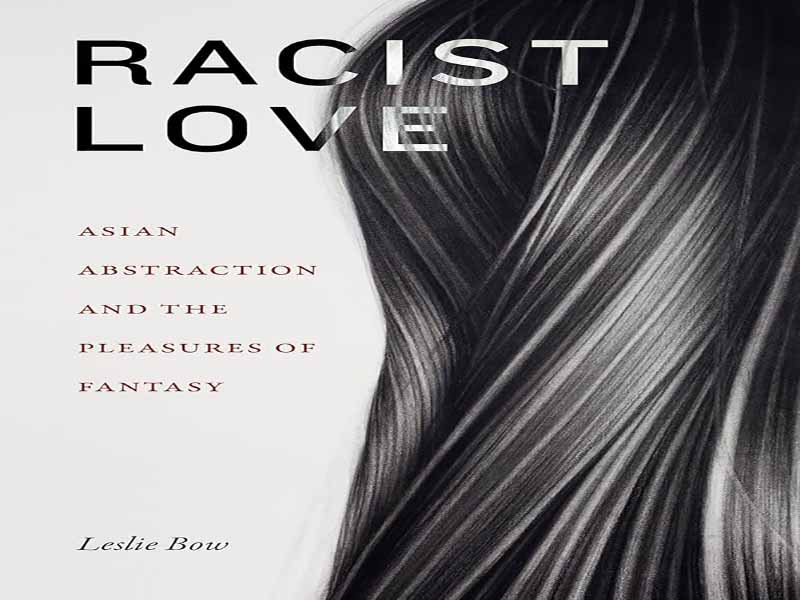- عنوان: RACIST LOVE
- نویسنده: Leslie-Bow
- سال انتشار: 2022
- تعداد صفحه: 280
- زبان اصلی: انگلیسی
- نوع فایل: pdf
- حجم فایل: 5.63 مگابایت
چگونه نژاد منبع لذت در قرن بیست و یکم است؟ این کتاب به بررسی راههای آشکار و گاهی ظریفی میپردازد که در آن سلسله مراتب اجتماعی با احساس مثبت، بهویژه احساسات مثبت پیرامون آمریکاییهای آسیایی، تقویت میشود. مقدمه عشق نژادپرستانه 2 · مقدمه در هزاره، نژاد به طور مداوم بر حسب جنبه های منفی – بیگانه هراسی، ترس، اضطراب، شکل گرفته است. لفاظی سیاسی نفرت نژادی در ایالات متحده به راحتی قابل تشخیص است: فراخوان برای ساختن دیوار، ادعاهایی در مورد محدودیت آزادی بیان، مناقشات در مورد زندگی افراد مهم، اختصاص قومیت به یک ویروس. و با این حال، به طرز متناقضی، ما ادعا می کنیم که تنوع را دوست داریم. ضرورت بازنمایی، اسکوپوفیلی نژادی را تغذیه میکند، لذتی بصری که توسط شهوانی متحرک میشود، اما به دیگر اشکال دلبستگی عاطفی نیز گسترش مییابد: محبت، همدلی، سرگرمی. چیزی که بل هوکز (1992، 21) معروف به آن «دریافت اندکی از دیگری» میدانست، ایده برخورد اروتیک را با تفاوت به تصاحب فرهنگی، به «سرقت» مفهومی صفات، ویژگیها، سبک و تداعی مورد نظر تعمیم میدهد. همچنین از تنشهای پیرامون عشق فتیشیستی سخن میگوید: آغشته کردن اشیا به اشیاء از یک اضطراب نهفته جلوگیری میکند. عشق نژادپرستانه: انتزاع آسیایی و لذتهای فانتزی در نامگذاری ساختاری از احساس دوپارگی که به آسیاییها در ایالات متحده معاصر میپیوندد، این فرآیند کاهش فتیشیستی را به معنای واقعی کلمه برای تجزیه و تحلیل بازنمایی بصری نه مردم آسیا، بلکه جایگزینهای ابژهشان میگیرد. این کتاب با بررسی روشهایی که فانتزی چیزهای متحرک درک معاصر از تفاوتهای نژادی در ایالات متحده را تضمین میکند، مکانهایی از یک تخیل نژادی را درگیر میکند که با میل، اشتیاق و دلهره در اطراف آمریکاییهای آسیایی آمریکایی در هزاره – یا به طور خاصتر، غیرانسانی آنها وجود دارد. پروکسی ها چگونه رابطه ما با اشیایی که از طریق توجه ما متحرک شده اند، از خیالات نژادپرستی صحبت می کند؟ تایمرهای آشپزخانه انسانسازی شده آسیایی، پانداهای کارتونی، روباتهای زنانه و عروسکهای واقعی گواهی بر اشباع و جابجایی همزمان معنای نژادی، توانایی آن در انتزاع شدن از تجسم انسان است. در اینجا، انتزاع نژادی به عنوان یک جایگزین استعاری بر اساس شباهت عاطفی عمل می کند. موجودات خیالی به عنوان مخزن احساسات به ظاهر مثبت و ارتباط صمیمی، هنوز مجرای تمایلات سیاسی هستند. اگر فانتزی بهعنوان «ابژه میل، بلکه بهعنوان مکان آن» عمل میکند (لاپلانش و پونتالیس، 1986، 26)، چگونه فانتزی اشیا، تمایلاتی را که ما نسبت به تفاوتهای نژادی در ایالات متحده قائل هستیم، آشکار میکند؟ اگر معنای نژادی همچنان در جریان احساسات منفی مهار شود، در مورد عشق چطور؟
How is race a source of pleasure in the twenty-first century? This book explores the overt and at times subtle ways in which social hierarchy becomes reinforced by positive feeling, particularly positive feeling surrounding Asian Americans. Introduction Racist Love 2 ・ Introduction At the millennium, race has been persistently framed in terms of negativity—xenophobia, fear, anxiety. The political rhetoric of racial hatred in the United States is easily recognizable: calls for wall building, claims about restricted free speech, contestations about whose lives matter, assigning ethnicity to a virus. And yet, paradoxically, we profess to love diversity. The imperative to represent feeds racial scopophilia, a visual pleasure animated by the erotic, but also extending to other forms of emotional attachment: affection, empathy, amusement. What bell hooks (1992, 21) famously deemed “getting a bit of the Other” extends the idea of the erotic encounter with difference to cultural appropriation, to conceptual “theft” of desired traits, attributes, style, and association.1 Yet it also speaks to tensions surrounding fetishistic love: imbuing objects with desire forestalls an underlying anxiety. In naming a structure of split feeling that attaches to Asians in the contemporary United States, Racist Love: Asian Abstraction and the Pleasures of Fantasy takes that process of fetishistic reduction literally to analyze the visual representation not of Asian people but of their object substitutes. Exploring the ways in which the fantasy of animated things underwrites contemporary understanding of racial difference in the United States, this book engages sites of a racial imaginary infused with desire, longing, and apprehension surrounding Asian Americans at the millennium—or more specifically, their nonhuman proxies. How does our relationship with objects animated through our regard speak to fantasies of racialization? Asianized anthropomorphic kitchen timers, cartoon pandas, feminized robots, and lifelike dolls testify to the simultaneous saturation and displacement of racial meaning, its ability to be abstracted from human embodiment. Here, racial abstraction performs as a metaphoric substitution based on affective resemblance. As repositories of seemingly positive feeling and intimate connection, imagined beings are yet conduits of political desires. If fantasy functions not as the “object of desire, but its setting” (Laplanche and Pontalis 1986, 26), how does the fantasy of things come to life reveal the desires we place on racial difference in the United States? If racial meaning continues to be harnessed to the circulation of negative feeling, what about love?
این رمان را از لینک زیر بصورت رایگان دانلود کنید.
Download: RACIST LOVE



































نظرات کاربران